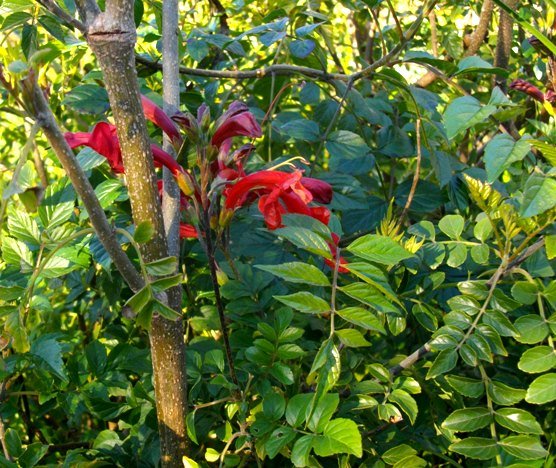Tecomaria capensis stems

Author: Ivan Lätti
Photographer: Thabo Maphisa
The stems of Tecomaria capensis are pale brown, here with an added olive-green tint. Old ones become fissured. The Cape honeysuckle branches much and is a very commonly used, fast growing hedge plant that responds well to frequent pruning. Scattered, whitish lenticels are found on the younger stems. The plant grows strongly in a wide range of conditions.
The leaves are compound and opposite with a terminal leaflet present. Such a leaf structure is called imparipinnate. Leaflet pairs vary between two and five. The leaf rachis is narrowly winged and hairy. Leaflets are glossy dark green above, paler below. The leaflet apex is tapering, the base rounded and their margins are scalloped or toothed. Hairy tufts (domatia) can be seen on the lower leaflet surfaces. Leaflet stalks, the petiolules, are very short.
This plant was photographed in a Stellenbosch garden in July (Coates Palgrave, 2002).

